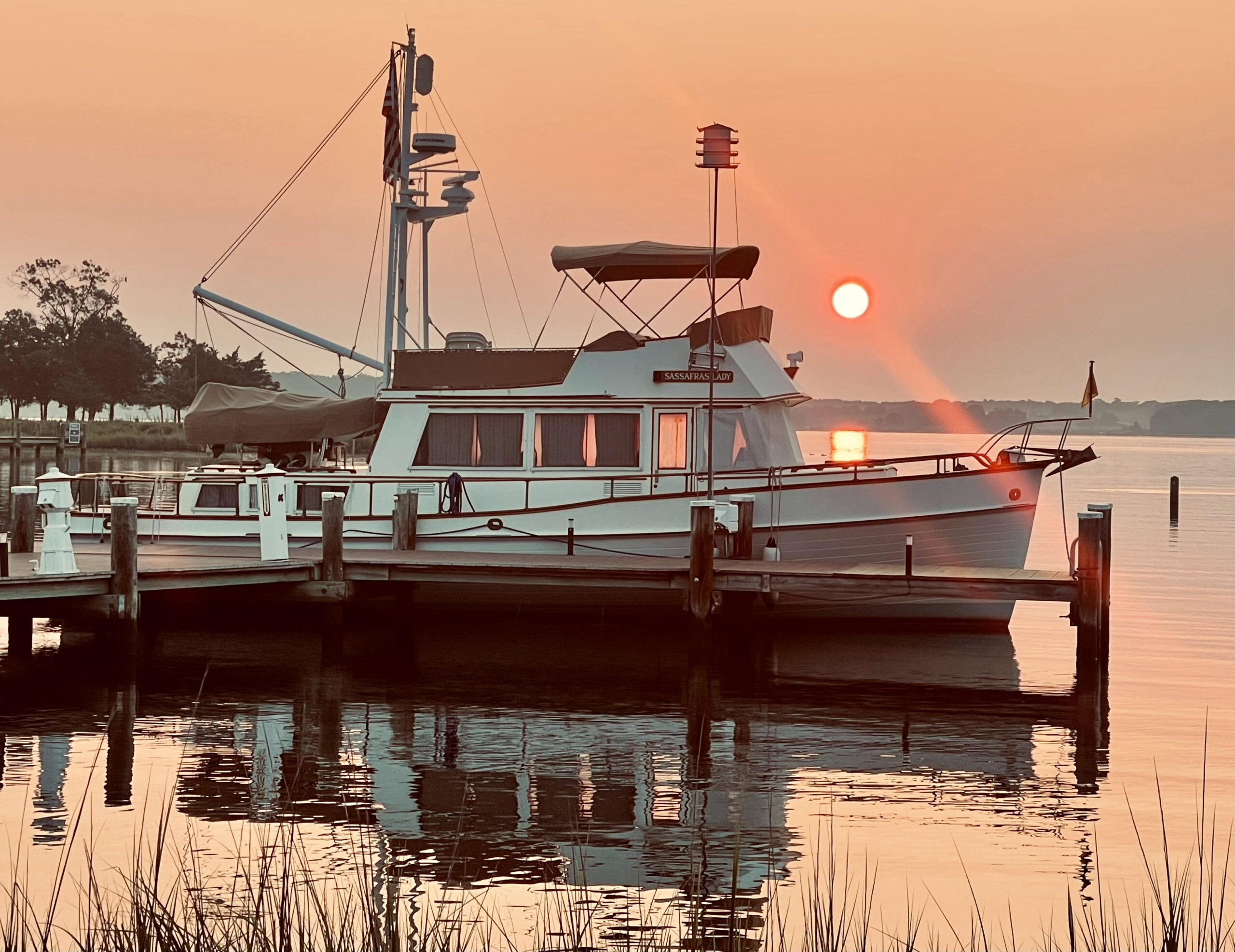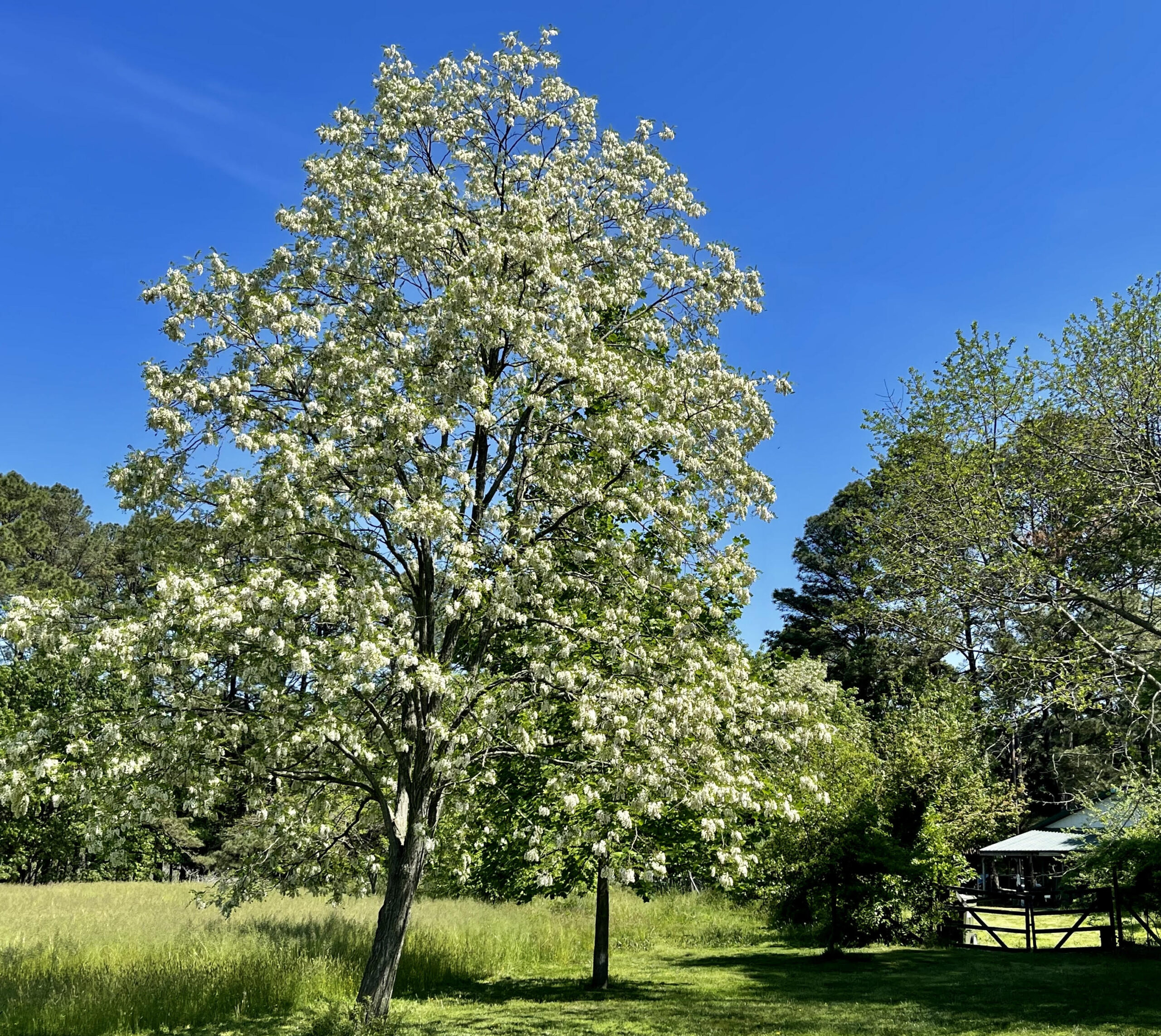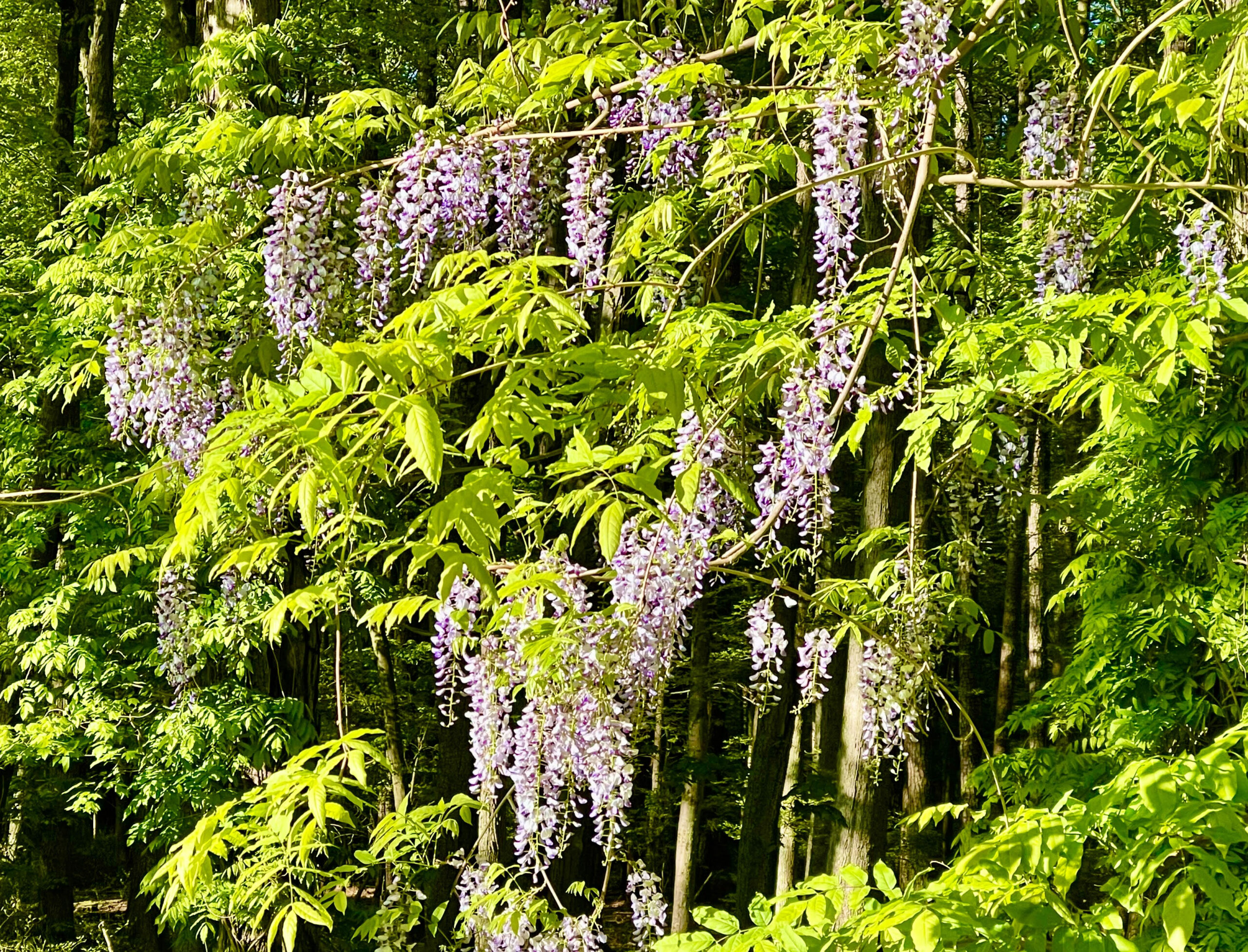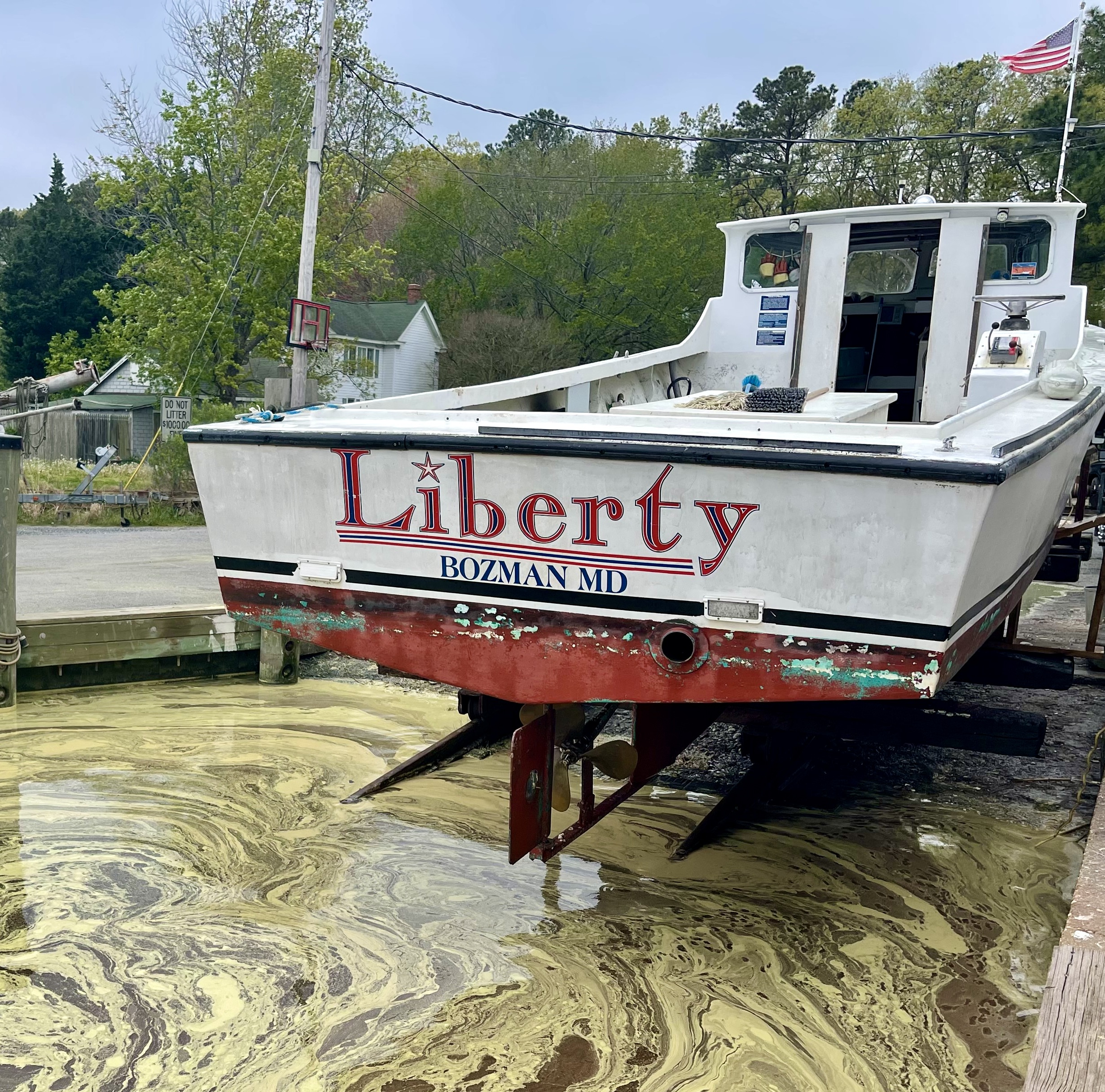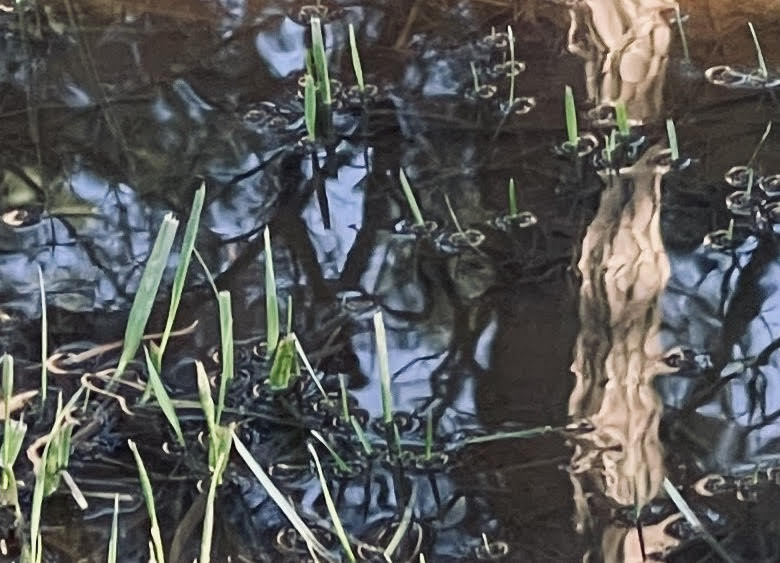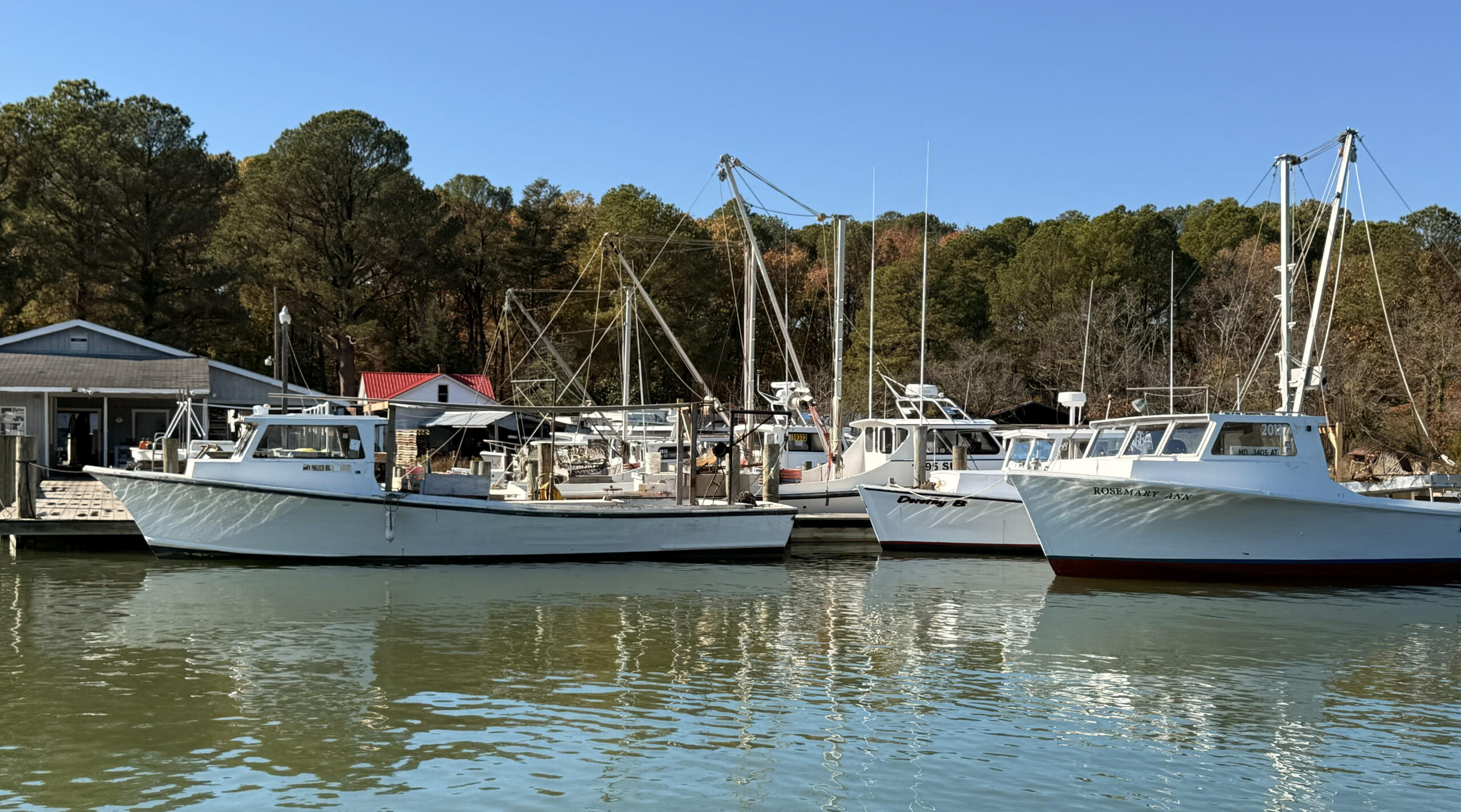
The power dredging oyster fleet at P.T. Hambleton’s crabbing and oystering operation on Grace Creek in Bozman. DENNIS FORNEY PHOTO
Oyster harvesting in Maryland’s Chesapeake waters on public bottom opened for the 2024-2025 season on Oct. 1. Hand tongers got the first crack at this year’s crop of market-size oysters since the season for power dredging doesn’t open each year until Nov. 1. The open season continues until March 31, 2025.
There’s nervousness on the water because the new season opens against the backdrop of two wildly different past two seasons.
According to state statistics gathered from oyster buyers up and down the Bay, Maryland’s watermen harvested and sold 722,850 bushels of oysters during the 2022-2023 season with an estimated dockside value of $31,241,577. The following 2023-2024 season’s numbers showed a harvest of 437,536 bushels with a dockside value of $15,528,786, a dramatic decrease.
Curiously, despite a large increase in the number of individuals reporting catches in the 2023-2024 season compared to the season before – 649 vs. 415 – the results in bushels harvested and their dockside value were much lower. It turns out that the high harvest and sales in the 2022-2023 season, that drew so many more individuals into the harvesting the following year, was an outlier.
Relative to the recorded harvests over the past 25 years, the 2022-2023 harvest represented a huge spike. A radically fluctuating market appears to be the dominant factor.
The decline the following year didn’t occur because the volume of oysters in the Chesapeake went down. Strong spat sets over the past few years have resulted in expanding oyster populations. Rather, problems in Gulf of Mexico oyster populations that led to harvesting moratoriums led to greater demand for Chesapeake oysters in that strong 2022-2023 season.
With the Gulf oyster industry back online during the season just past, demand for Chesapeake oysters along the East Coast declined, especially after the typically strong holiday season. In January, February and March there were many weeks when buyers only had a market two or three days. Instead of harvesting five days a week as permitted by law, watermen had to stay home when there weren’t market days.
Jeff Harrison, a waterman and president of the Talbot Waterman Association, said things weren’t so great for Maryland oystermen last year and he expects the same for this new season. “We’re getting $35 per bushel this year. That’s the same as we got 25 years ago. It might go a little higher before Christmas but not much. The biggest thing is the market. It’s not what it was and we’re not sure why. There’s lots of oysters out there. The spat set in Broad Creek is amazing again this year, possibly because of the sanctuaries where the state’s putting oysters and prohibiting harvesting. And it’s not the quality of the oysters. The quality is as good as I’ve ever seen. It’s a good time to be eating oysters. I think the shuckers are getting two to three pints of oysters more per bushel than they were last year, but we’re still only getting $35 per bushel.”
Harrison said this year’s crab market was also soft. “Everything hit great around the Memorial Day holiday. Best ever. We were getting $200 per bushel and there were plenty of crabs around. Making good money.”
But then, he said, the market softened through the summer. “The crab volume went down when they spread out from the creeks. We weren’t catching as many and the price also started going down. By the fall, when the crabs are the fattest and the best, the price at the dock for us had dropped to $70 per bushel for number ones. It’s been a long time since we got that little. Better product and less dollars, for the oysters and the crabs. It doesn’t make any sense.
“Apparently, the same thing’s going up and down the coast,” he said. “Lobstermen and shrimpers are saying they’re not getting any real money either. And 85 percent of our seafood still comes from overseas. Why don’t people want to buy local seafood and pay for it? Maybe it’s the economy. I don’t know. But something’s going on.”
Chris Judy, director of Maryland’s Shellfish Division, tried to inject a dose of reality into the situation with a touch of the positive. “From what we hear, this season’s catch is down, but note that even if it ends up at about 400,000 bushels (compared to the earlier 722K or 437K) this is still a strong harvest compared to the trend of the prior decades.”
Watermen harvest oysters by hand tonging, dredging under sail and power on skipjacks, diving and hand picking from the bottom, and using hydraulic-powered patent tongs for working deeper water bars. Dredging the bottom under power with typical workboats has become the most popular and efficient method.
Dennis Forney has been a publisher, journalist, and columnist on the Delmarva Peninsula since 1972. He writes from his home on Grace Creek in Bozman.






